I got it in my head that I wanted to build a TEC (thermo-electric cooler aka Peltier coolers) cooled cloud chamber. Cloud chambers allow you to view radioactive particles as they shoot through a supersaturated alcohol vapor. The radioactive particles act as nucleation points in the saturated atmosphere causing the vapor to condense into small droplets. The result is that you see small trails shooting through the chamber where the particles have traveled.
I looked on the web for a few ideas. I saw a design which used two Peltier coolers to create a small cloud chamber and I thought I could improve upon this by using more Peltier/TEC coolers. I happened to have a box of them so that would not be too much work. That design also used an air cooled heat sink on the hot side of the Peltier to remove the waste heat. I was planning on using more Peltier coolers so I decided to go with a water cooled route. This would require building a water block which would transfer the waste heat of the process into a bath of cold water and allow me to reach lower ultimate temperatures on the cold side of the Peltier cooler.
Peltier coolers work by using electrical current to create a temperature difference through a series of silicon junctions and results in a hot face and a cold face on the module. The cooler the hot face is, the cooler the cold face can become. This setup is a very inefficient method of creating a cooling or heating source. Not only does the waste heat consist in the amount of heat you transferred away from the cold side, but also the amount of power required to power the Peltier itself. If the Peltier does not have the capacity to cool the hot item, the whole chain brakes down and temps will run away. They are advantageous in that they’re compact and can be installed in tight spaces as long as suitable power is available.
In the photo below you can see my first aluminum plate with 6 80 watt 40mm x 40mm Peltier coolers mounted to it. Each one of these coolers is rated at 16.1V Max at 8.1 Amps with a temperature difference between hot and cold of 122F as long as you can keep the hot side cold as long as you meet certain requirements.
The TECs / Peltiers are mounted to the aluminum cold plate with Arctic Silver Ceramique heat sink compound. Many people will use the metallic gray Arctic Silver 5, but I like the Ceramique due to the fact it thickens up greatly when cooled which helps keep things in place, in this instance.
I needed to also make a water block for this setup. I didn’t have any large blocks of copper or aluminum which I could machine into a water block so I decided to braze some copper pipe together and then solder that to some copper bars to act as the cold plate.
The next few photos are of that construction.
First I cut some 1/4(inside diameter) copper tubing to length. These are the grid that the copper cold plate will eventually be soldered to.
I then brazed those together with an Oxy/Mapp torch. It took a lot of work and a huge amount of heat. As more and more parts were brazed together it took more and more heat to be able to keep the brazing rod flowing.
I then used some stub pieces of copper pipe which were pre-threaded and brazed the grid of tubes into slots I had cut into either stub. This left the smaller tube pieces hanging out into passage of the larger tube.
I used a drill to drill out the stubs of the small tubes so that the water would have a clean path to flow through from the large inlet and outlet tubes. This was a pain in the neck but worth the time and effort.
Once that was done I had to braze together the 2 1/4″ x 3″ wide pieces of copper I had to make the cold plate. Again a process that took a lot of heat. You can see it in progress below and see how discolored and scaled the copper looks.
After brazing the plates together I used a surface grinder to clean up the joint quite a bit and then cleaned up the whole plate. I only brazed on side of these bars as I didn’t need thermal conductivity between them. One plate covers a row of 3 TEC/Peltier coolers. I tinned one entire side of the plate with solder and also tinned one side of the copper heat exchanger with solder, then heated them both up and mounted them together. This took a very large amount of silver bearing solder and is probably not the most effective method, but I had already headed down this path.
After being soldered together, painted and wrapped in some insulating foam they looked pretty good. Here you can see my first aluminum plate with Peltiers and foam insulating tape around them.
I smeared some Arctic Silver 5 over the hot surface of the Peltiers in order to mount them to the chiller plater.
And then mounted the Peltiers onto the water cooling block and hooked up the block to a normal tapwater faucet and turned it on to see how well the Peltiers would chill down the aluminum plate. I hooked the peltiers in 3 series connected sets of 2 modules to a 24V power supply. The tap water on the exit side of the heat exchanger was about 50F and I was able to get the aluminum plate surface down to -18F. -17F is the temeperature required for proper operation of the cloud chamber.
Unfortunately a couple of the Peltiers did not seem to be operating properly and were not cooling down as expected. You can see a couple of warm spots on the aluminum plate.
I pulled everything back apart to see what was going on. I replaced the pelts that were not cooling properly but was concerned that I wouldn’t be able to maintain the -17F temperature required once everything was assembled.
A friend of mine donated some smaller Peltier coolers to the cause and I built a double stack cooler array with my 80 watt coolers on the bottom and these new coolers, which looked 50-60 watts, on the top.
I cut a larger aluminum plate for some reason (12″ x 6″) for some reason and replaced the smaller aluminum plate with that. I also cut some glass sides and a top for the container and used Silicone to attach the sides to the aluminum base plate.
The end result of the rebuild was this little glass box seen below. I painted the top surface of the aluminum plate with flat black paint to provide a good contrast against the little white lit vapor trails I was expecting to see flying around inside of the cloud chamber.
The upper, lower power pelts were run on 8v each with the lower higher power Peltiers being run at 12 volts, so a total of 12 Peltier coolers now in place. The cooling system was now connected to a 5 gallon bucket full of ice water being recirculated by an old DD 12 1/2″ ID pump had use for a PC water cooling project previously. I poured a bit of 90% isopropyl alcohol into the bottom of the container and soaked a paper towel in it as well which I fastened to the underside of the glass lid with some wire.
After letting the whole thing cool down for quite a while I started experimenting. I spent quite a bit of time trying to get some visible trails out of the unit, but things just didn’t seem to be working. I might occasionally see a brief trail here and there, but with the urnanium ore I had in the chamber I should have seen a whole bunch more. Eventually I remembered reading that a static charged baloon can improve the effectiveness of the cloud chamber so I charged up a balloon in my hair and set it onto one of the wires that was holding the alcohol soaked paper towel to the lid and immediately saw a response. Check out the video below.
I want to make more changes. I think the aluminum plate is too large for it all to cool down to the right temperature. I will be reducing the size of the cloud chamber by 40-50 percent. Also it seems that a couple of the Peltiers are not working correctly so I need to replace them as well.
Instead of using a balloon I want to use a continuous power supply to supply the high voltage to the electrode over the cloud chamber. I’ve read that about 1000 volts will do, so I may just build a current limited Cockroft-Walton multiplier from 120VAC.

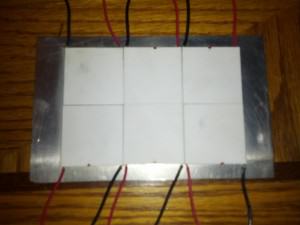
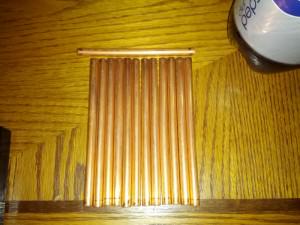
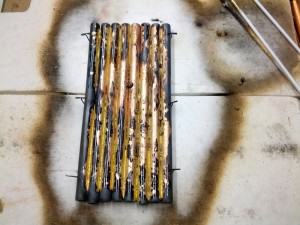
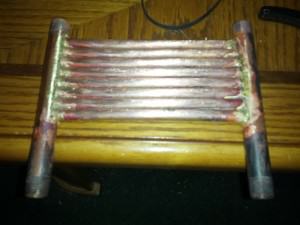
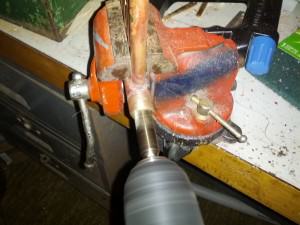
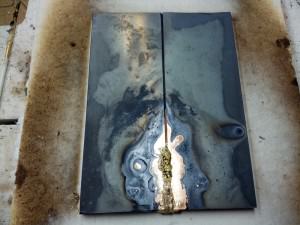
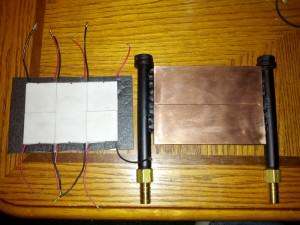
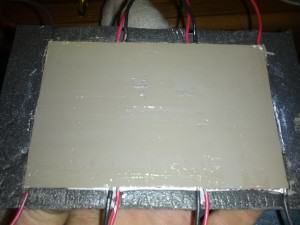
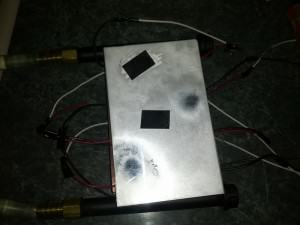
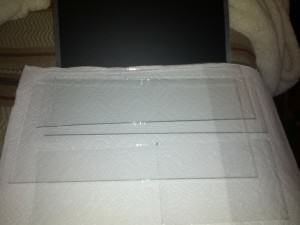
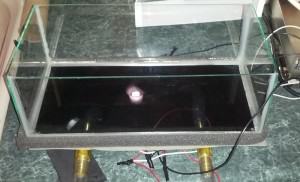
Leave a reply to TEC Cloud Chamber Project